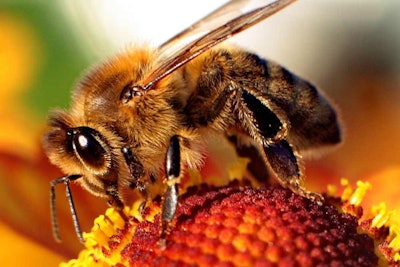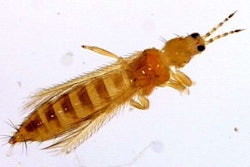 Honeybees are instrumental to food production and pollinate 87 of the top 115 food crops in North America.
Honeybees are instrumental to food production and pollinate 87 of the top 115 food crops in North America.Photo: Wikipedia
A breakthrough in honeybee immunization has been discovered after a 15-year study on a bee blood protein known as vitellogenin.
Scientists from Arizona State University, University of Helsinki, University of Jyväskylä and Norwegian University of Life Sciences discovered the process of how bees immunize their offspring and what it could mean for vaccinations.
The discovery was published in PLOS Pathogens. The findings explain how immune system priming occurs through vitellogenin because bees lack antibodies.
In honeybee colonies, the queen has food brought to her by worker bees. While gathering pollen and nectar, worker bees can also pick up pathogens. The pollen, nectar and pathogens are transformed into “royal jelly,” which is food that is only eaten by the queen.
Any bacteria picked up from outside that is in the royal jelly is digested and stored in the queen’s “fat body” which functions similarly to a liver. The bacteria are then bound to the protein vitellogenin and carried to the developing larvae through the blood.
Thanks to vitellogenin, baby bees’ immune systems are primed against infection. Moreover, scientists now believe they understand how to vaccinate bees.
“We are patenting a way to produce a harmless vaccine, as well as how to cultivate the vaccines and introduce them to bee hives through a cocktail the bees would eat,” Dalial Freitak, a postdoctoral researcher with University of Helsinki, told Entomology Today. “They would then be able to stave off disease.”
American foulbrood, a disease that is highly contagious and kills honeybee larvae, is one of the dangers that could someday be eliminated by a bee vaccine.
“Because this vaccination process is naturally occurring, this process would be cheap and ultimately simple to implement,” said Gro Amdam, a professor with ASU’s School of Life Sciences. “It has the potential to both improve and secure food production for humans.”










